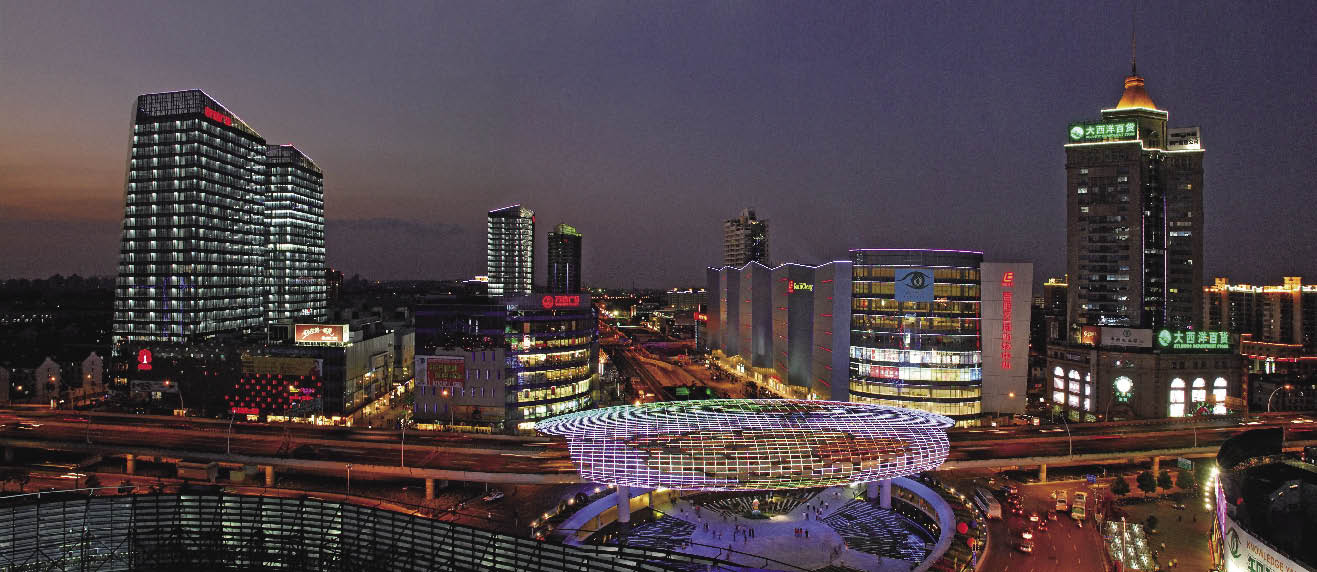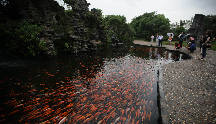Sentimental Journey: Recreation of a "Rust Belt"
Sentimental Journey: Recreation of a "Rust Belt"
By LI ZHUOXI& WU MEILING
SEVERAL years ago, few travel books ever mentioned Yangpu District in the context of exploring glitzy Shanghai. That's understandable considering the fact that this cradle of Shanghai's modern industry wore down into a "rust belt" when it fell through the cracks of economic and industrial activity begun in the 1980s. Old legacies and new endeavors are legitimizing its new claim to an old economic birthright, and it's doing it all in style – again – in a transformed, knowledge economy.
Today, when many travelers wind up their Shanghai tour with an excursion to Yangpu in the northeastern part of the city proper, they may be happily surprised to find how elegantly and magnificently the old, defunct factory facilities along the "Rust Belt" of Yangshupu Road have been reinterpreted and redesigned, conjuring up nostalgia for the pioneering industrial sector and emphasizing its showcases of Western architecture. The city's omnipresent intellectual, ecological and commercial dynamism still fills every corner of that old industrial district.
 |
|
Onward and upward: the new cityscape of the Jiangwan-Wujiaochang area. |
A Cradle of Modern Industry
The Yangpu section of the Bund along the Huangpu River was the birthplace of China's modern industry. In the 1880s it saw the rise of the country's first modern waterworks and mechanical cotton mill. During its industrial flowering, the area was studded by nearly 1,000 large and medium-sized factories of all kinds. Today, old factory buildings totaling millions of square meters still stand here intact. Teng Kunyen, an architect from Taiwan, commented that the area was an authentic "international architectural museum," a kind of modern artwork created by industry.
Walking northward along Yangshupu Road, one will come upon a cluster of Gothic buildings whose octagonal windows enhance simple red-brick walls. Its huge, flame-shaped archway entrance opened the chapter on modern municipal waterworks in China. Further down the road and behind an iron fence was the country's first power plant, housed in Baroque style facilities. Two gray chimneys thrust into the sky, like a painting romanticizing industrial civilization. The country's first gasworks was also born here. It is believed that it was the industrial powerhouse of Yangpu that conceived and gave birth to the warehouses along the Huangpu and Suzhou rivers, that created the commercial prosperity of Nanjing Road, and that finally led to the rise of the financial giants along the Bund.
Yangshupu Road has touched a chord with artists. Looking at the solitary, melancholic romance of the desolate industrial facilities that flank it, Taiwan architect Teng Kunyen conceived of the idea of preserving the historic and artistic value of these old facilities by converting them into monuments to the dynamism of industry. In 1996, he set himself up in an old warehouse along the Suzhou River, and by 2004 his Creative Shanghai Riverside was established in an old GE factory on the west bank of the Huangpu River. His success has encouraged other creative minds; together they sparked an artistic renewal of this old industrial enclave akin to Beijing's groundbreaking 798 Art District. Now a 10-km-long riverfront in Yangpu keeps and honors the heritage of Shanghai's former industrial quarter.
Services
Economy
- Eco-agriculture and Eco-tourism Power Nanchang’s Green Development
- Balance Environmental Protection and Economic Prosperity – Nanchang Looks to European Technology for Green Development
- Sustainable Growth Requires Wiser Energy Use
- Chinese Economy: On the Path of Scientific Development
- China's Economy over the Last Ten Years

